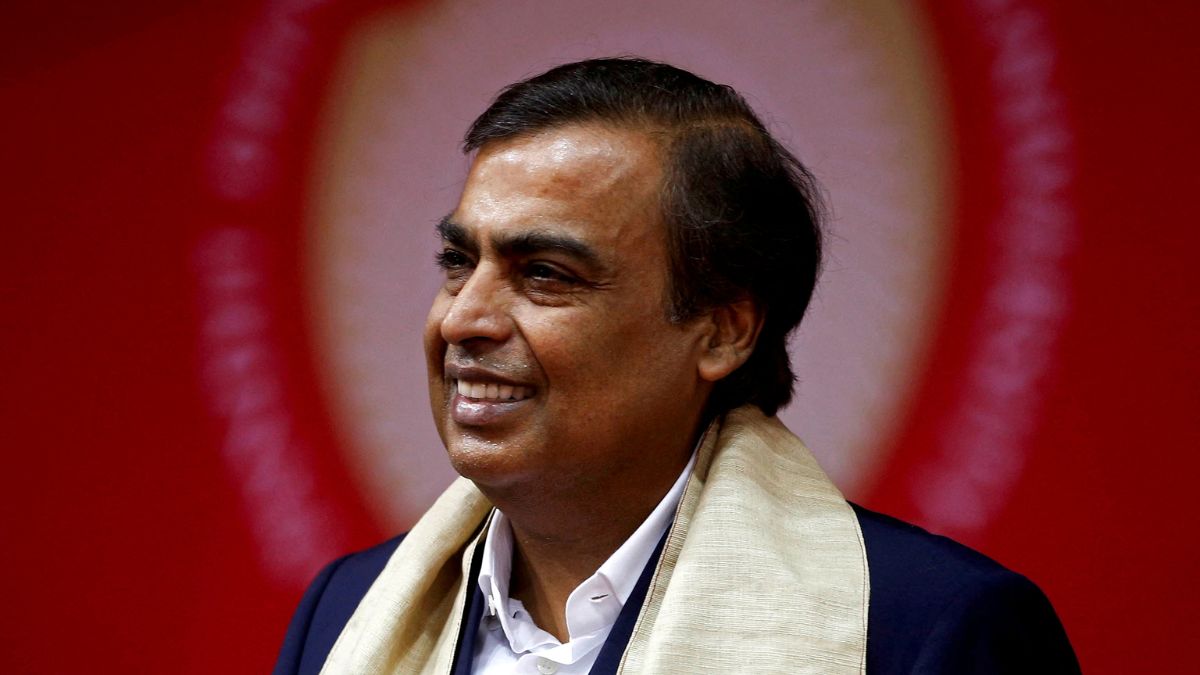The 30-share Sensex closed at 80,981.95, 886 points, or 1.08 per cent, lower from Thursday, while Nifty 50 ended down 1.17 per cent or 293 points at 24,717.70 read more
)
A man looks at a screen across a road displaying the Sensex on the facade of the Bombay Stock Exchange (BSE) building in Mumbai. Source: REUTERS/FILE.
The Indian benchmark indices snapped a five-day winning streak with the BSE Sensex and Nifty 50 ending below 1 per cent on Friday. The losses were triggered across the board selloff amid weak global cues.
The 30-share Sensex closed at 80,981.95, 886 points, or 1.08 per cent, lower from Thursday, while Nifty 50 ended down 1.17 per cent or 293 points at 24,717.70.
The BSE midcap index shed 1 per cent and smallcap index fell 0.5 per cent.
The sell-off was broad-based, with all sectoral indices except Nifty Pharma ending in the red.
Among sectors, except pharma, and healthcare, all other indices ended in the red with auto, energy, PSU Bank, IT, metal and realty down 1-3 per cent.
Of the 50 stocks in Nifty, 42 ended in the red, with Eicher Motors, Tata Motors, Maruti Suzuki India, and JSW Steel being the top laggards, falling up to 5 per cent. Divis Labs, HDFC Bank, Dr Reddy’s Labs, Sun Pharma, and Britannia Industries, on the other hand, were the top gainers on the index.
On the BSE, Maruti Suzuki India, Tata Motors, JSW Steel, and Larsen & Toubro were the top losers, while HDFC Bank, Sun Pharma, and Nestle India managed to settle with some gains.
What led to fall in the Indian stock market?
The Indian stocks on Friday (August 2) started day’s trade on a lower note. The Sensex opened at 81,158.99, while Nifty 50 opened at 24,789.
The stocks were down following a global sell-off, as disappointing US data raised worries about a potential slowdown in the world’s largest economy.
Markets in the US and Asia plunged as concerns over economic growth losing steam grew weaker-than-expected US factory data.
The Institute for Supply Management (ISM) on Thursday said its manufacturing PMI dropped to 46.8 last month, the lowest reading since November, from 48.5 in June. A PMI reading below 50 indicates contraction in the manufacturing sector, which accounts for 10.3 per cent of the economy.
Apart from this, investors’ sentiments were low due to geopolitical tension including Israel’s claim on Thursday that Mohammed Deif, the head of Hamas’ military wing, was killed in an Israeli airstrike in Gaza last month. This came a day after Hamas’s political leader, Ismail Haniyeh, was killed in Iran’s capital, Tehran.
“The domestic market saw a broad-based sell-off, indicating that it may have reached an exhaustion point due to a lack of new triggers for further upward movement,” Vinod Nair, Head of Research, Geojit Financial Services said.
“Q1FY25 earnings have been lackluster so far, while broader market valuations remain significantly high. Meanwhile, despite the US Fed hinting at a rate cut in September, global markets are consolidating as this move has already been priced in. Additionally, weak earnings from the US IT sector, a potential rise in unemployment, the possibility of further rate hikes by the BOJ, and a slowdown in China’s growth are all dampening market sentiment,” Nair said.
With inputs from agencies

 1 month ago
52
1 month ago
52
)
)
)
)
)
)
)
)
)
)
)
)
)
)
)
)
)
)
)
)
)
)
)
 English (US) ·
English (US) ·